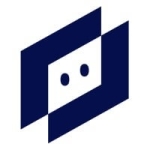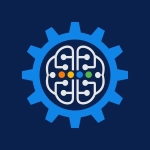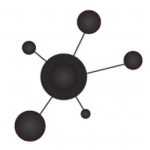What is our primary use case?
We use Amazon CloudWatch for monitoring infrastructure for EC2 instances. We created CPU, memory, system, status, and disk utilization checks. Based on those checks, we created actions such as disk cleaning by running a command, integrating with Lambda, and sending email notifications. We use the basic functionalities of Amazon CloudWatch.
How has it helped my organization?
Amazon CloudWatch helped improve my company through notification and automation. The tool is integrated with actions, so if an alarm gets triggered, you can execute an action through Amazon CloudWatch. Task automation through Amazon CloudWatch has improved the company's overall efficiency in terms of the time to resolve issues, so the tool has been beneficial.
What is most valuable?
What I found most valuable in Amazon CloudWatch is that it gives you detailed information, which I found helpful because it can even provide you with data for the past one minute, which is quite granular. That was what helped me most in terms of finding the root causes.
Task automation is another valuable feature of Amazon CloudWatch.
What needs improvement?
What would make Amazon CloudWatch better is if it includes more on-site checks, particularly status checks on the CPU, network input/output, etc. It would also be helpful if there's built-in swap space, disk, and memory monitoring in Amazon CloudWatch because, at the moment, my team has to configure it manually through a shell script.
Amazon CloudWatch is a pretty complete tool with many features, so apart from the improvements I mentioned, there isn't anything else I want to change in Amazon CloudWatch.
For how long have I used the solution?
I've been using Amazon CloudWatch for almost two years.
What do I think about the stability of the solution?
Amazon CloudWatch is a very stable tool.
What do I think about the scalability of the solution?
Amazon CloudWatch is a scalable tool because it has no limitations in the number of systems and alarms you can create.
How are customer service and support?
I'd rate support for Amazon CloudWatch four out of five, but this is because my company has AWS premium support, so I'm unsure how it is with others with a different level of support with AWS.
Which solution did I use previously and why did I switch?
We didn't use a different solution before using Amazon CloudWatch.
How was the initial setup?
The initial setup for Amazon CloudWatch was quite okay, particularly for the standard alarms provided by Amazon. Still, for the custom alarms, such as memory and disk alarms, you have to put in some effort because if you make changes to the system, you'd also have to make changes in the scripts as well, so if that could be automated, it would be beneficial.
What about the implementation team?
We implemented Amazon CloudWatch in-house. We're in consulting, so in a way, we're the third party who can implement the tool.
What was our ROI?
As my company only had to put in a small investment for Amazon CloudWatch, and the tool helped in terms of monitoring, alerting, etc., and is quite a good tool, in my opinion, it gave my company good ROI.
What's my experience with pricing, setup cost, and licensing?
Amazon CloudWatch has very cheap pricing, and it hardly costs my company $25-$30 a month for fifty systems, so it's pretty affordable.
Which other solutions did I evaluate?
My company didn't evaluate other options because Amazon CloudWatch was pretty native. It was the only tool that was there, so Amazon CloudWatch was the only tool my company used and nothing else.
What other advice do I have?
Amazon CloudWatch is a web-based tool, so there's no version control for it, so you could say it's always the latest version provided by Amazon. It's deployed on the cloud.
Almost everyone from the technical team within my company uses Amazon CloudWatch, so that's five to six people in total.
One to two people is enough to handle the deployment and maintenance of Amazon CloudWatch because it's a one-time process. Once it's done, you don't need to change it in a way, so one to two people would be fine.
As Amazon CloudWatch is an essential tool for my company, usage of it will gradually increase with new projects or instances because of the basic infrastructure monitoring and similar features it provides; however, there's no plan to expand in terms of doing more with Amazon CloudWatch.
My advice to others looking into implementing Amazon CloudWatch is that Amazon has pretty sufficient documentation on installing the tool and configuring the alerts. Still, it would be better to have a script deployed through Lambda to create alarms or use the Amazon SSM Agent to create the alarms instead of manually doing it.
I'd rate Amazon CloudWatch as eight out of ten because it does whatever it promises, and it's a good tool for monitoring and alerting.
Which deployment model are you using for this solution?
Public Cloud
Disclosure: I am a real user, and this review is based on my own experience and opinions.




















